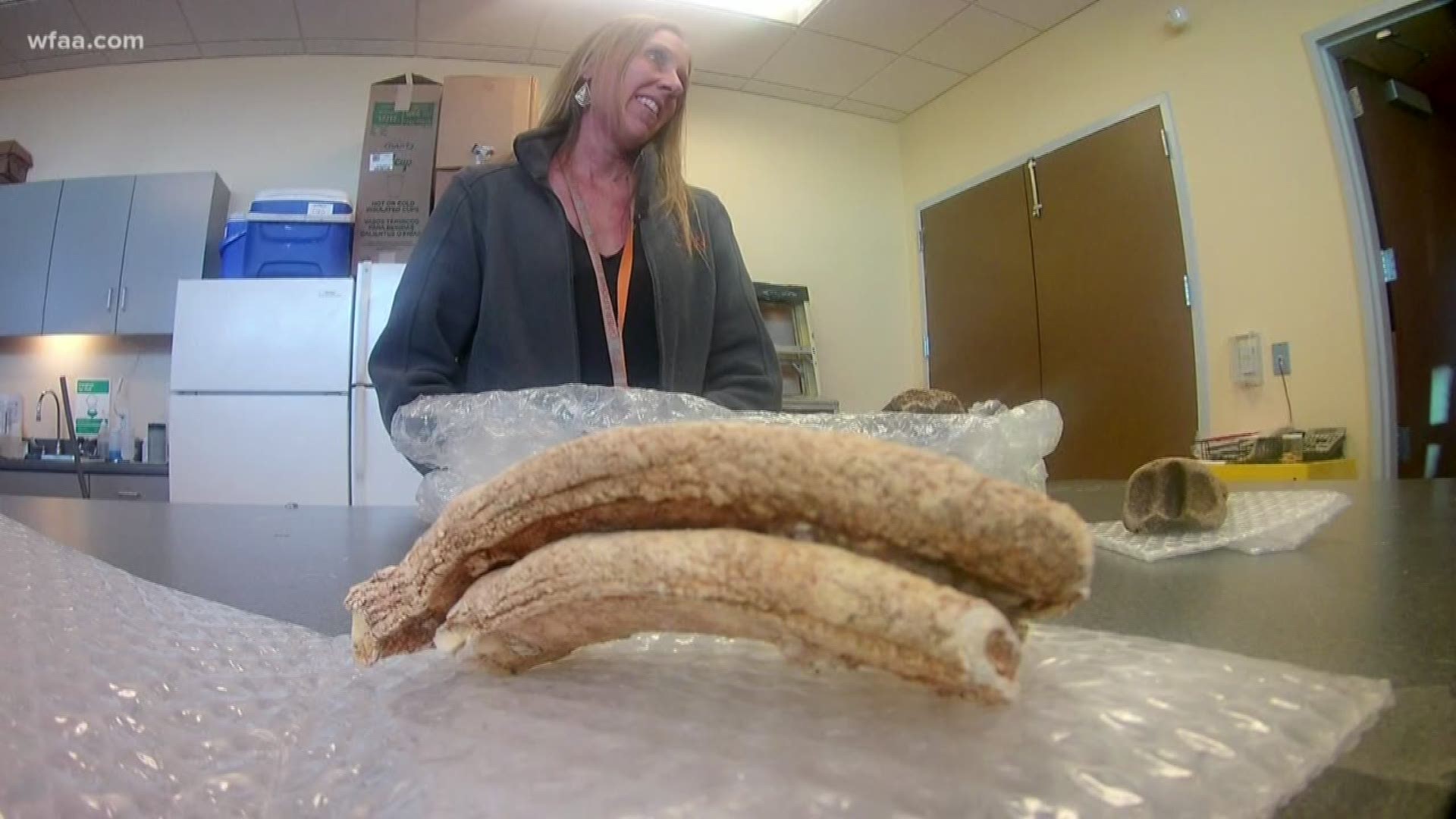Before the jet age came, before mammoth planes ruled the skies, ice age animals roamed the earth where DFW Airport now stands. And this month, after thousands of years, a few of them finally made their arrival.
Two airport employees made the big discovery recently while they were working in a secure part of the airport property that's off limits to the public. Brandon Burks and Roger Duval both work in the DFW Environmental Affairs Department, a job that requires them to regularly check creek beds for erosion.
While they were working, Burks spotted what at first he thought were unusual rocks. "Completely exposed, you know, it wasn't buried at all which was interesting," Burks recalled.
He showed them to Duval, who happens to be an amateur fossil hunter. "He kind of put them together and was like, 'You know what, this could be a mammoth tooth,'" Burks said. "We kind of freaked out."
They found three different specimens altogether, two in one location and a third, larger bone in another part of the property. They were taken back to the Environmental Affairs lab where Heather Frost took photographs and eventually spoke to an SMU paleontologist. "He estimated these bones to be 11,000 years old," said Frost.
She said the specimens were confirmed as a prehistoric bison bone, an ice age horse's toe bone, and two plates of a mammoth's tooth. "This is actually the first time that ice age fossils have been found in this portion of North Texas or on the airport grounds," said Frost.
DFW Airport is a massive piece of land and much of it is essentially untouched. It's one reason why they think the bones were visible. "It's definitely unusual just to find these laying around," said Roger Duval. "So it seems like a lot of these are being washed out from the recent rains."
The fossils will soon depart DFW en route to SMU where they will be catalogued, preserved and studied further. "Now we know we had ice age animals wandering the grasslands, and now we're moving 69 million passengers a year. Same piece of land, and the only separation is time," said Frost.
In a place where all eyes look up, they'll keep an eye on the ground. "There is definitely a chance we could find more of this animal," said Duval.

